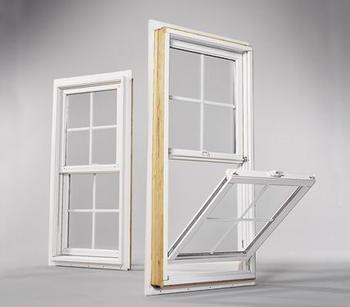 The global market for doors and windows has shown steady growth over the years, with a notable 6.8% annual increase between 2011 and 2015, following a period of economic slowdown from 2005 to 2010. By 2015, the total value of this market is expected to reach $1.92 trillion. According to the report, developed nations, particularly the United States, have seen significant profit margins, which may be inflated due to market dynamics.
The study also highlights that during the 2009–2010 recession, demand for residential windows and doors in developed countries surpassed that of commercial buildings. This shift reflects changing priorities as homeowners focus more on comfort and efficiency.
Looking ahead, energy-efficient doors and windows are set to gain even more traction by 2015. This trend is driven by both growing environmental awareness among consumers and supportive government policies, such as tax incentives aimed at promoting sustainable building practices.
In addition, the demand for safety-focused products like blast-resistant doors is expected to rise, especially in developed regions where security concerns are on the rise.
China’s share of the global window and door market is projected to grow from 27% in 2010 to 30% by 2015. This increase is fueled by rapid economic development, faster industrialization, and expanding living spaces in rural areas, all of which contribute to higher demand for quality door and window solutions.
Meanwhile, the U.S. market is anticipated to rebound strongly, with an average annual growth rate of 7.7% through 2015—contrasting sharply with the 25% decline experienced between 2008 and 2010. Similarly, markets in Japan and Western Europe are also expected to recover significantly, signaling a broader global recovery in the construction and building materials sector.
The global market for doors and windows has shown steady growth over the years, with a notable 6.8% annual increase between 2011 and 2015, following a period of economic slowdown from 2005 to 2010. By 2015, the total value of this market is expected to reach $1.92 trillion. According to the report, developed nations, particularly the United States, have seen significant profit margins, which may be inflated due to market dynamics.
The study also highlights that during the 2009–2010 recession, demand for residential windows and doors in developed countries surpassed that of commercial buildings. This shift reflects changing priorities as homeowners focus more on comfort and efficiency.
Looking ahead, energy-efficient doors and windows are set to gain even more traction by 2015. This trend is driven by both growing environmental awareness among consumers and supportive government policies, such as tax incentives aimed at promoting sustainable building practices.
In addition, the demand for safety-focused products like blast-resistant doors is expected to rise, especially in developed regions where security concerns are on the rise.
China’s share of the global window and door market is projected to grow from 27% in 2010 to 30% by 2015. This increase is fueled by rapid economic development, faster industrialization, and expanding living spaces in rural areas, all of which contribute to higher demand for quality door and window solutions.
Meanwhile, the U.S. market is anticipated to rebound strongly, with an average annual growth rate of 7.7% through 2015—contrasting sharply with the 25% decline experienced between 2008 and 2010. Similarly, markets in Japan and Western Europe are also expected to recover significantly, signaling a broader global recovery in the construction and building materials sector.Brass is a special copper alloy. Brass is an object made of an alloy of copper and zinc. It gets its name from its yellow color. Brass with 56% to 68% copper has a melting point of 934 to 967 degrees. Brass has good mechanical properties and wear resistance. Because of its unique advantages, it has become an important part of the parts manufacturing industry. It is generally used for precision copper parts such as automobile parts, medical parts and electrical parts.
Brass Precsion Turned Parts,Brass Precision Parts,Brass Turned Components,Brass Precision Turned Parts
Stand Dragon Industrial Co., Ltd. , https://www.standdragontw.com
